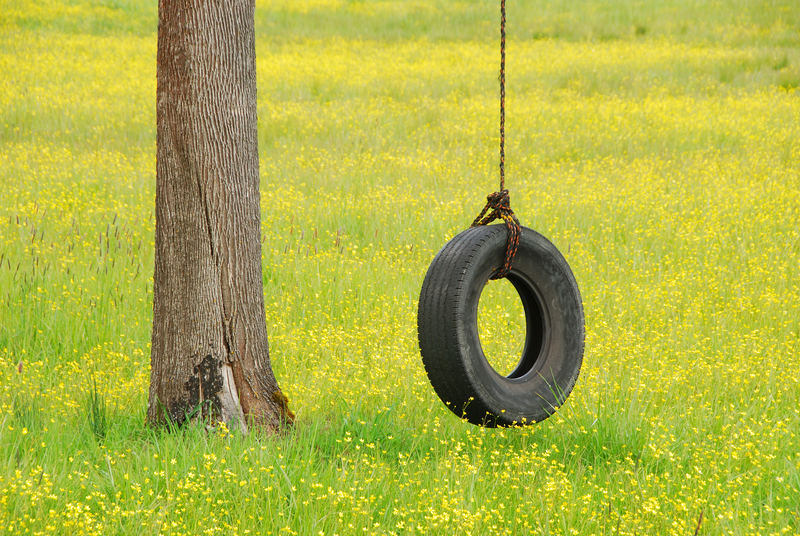The Evolution of Waste Disposal: A Journey Through History
The management and disposal of waste is a constant challenge societies have faced through time. From humble beginnings to the complex systems we know today, waste disposal methods have undergone a fascinating transformation, simultaneously shaping and reflecting advances in technology, culture, and environmental awareness. In this article, we embark on an exploration of the history and evolution of waste disposal, considering its profound impact on our world.
Early Civilizations and Their Waste Management Solutions
Waste is an inevitable byproduct of human life. Even the earliest hunter-gatherer societies had to contend with the remnants of their existence. However, it was with the formation of permanent settlements that the challenge of disposing waste efficiently first emerged.
Primitive Societies: Discarding with Nature
- Nomadic Lifestyle: Early humans produced little waste, as their nomadic lifestyle meant they could simply move away from refuse.
- Organic Decomposition: Most waste was biodegradable and naturally assimilated back into the environment.
However, the evolution of waste disposal took a significant turn as people began to establish permanent communities.
Ancient Cities: The Roots of Waste Disposal Systems
With the rise of ancient urban centers such as Mesopotamia, Egypt, and the Indus Valley, the accumulation of waste became a pressing problem. These societies had to innovate:
- Designated Waste Heaps: Archaeological evidence suggests that ancient communities established dedicated garbage dumps beyond city boundaries.
- First Sewer Systems: The Indus Valley Civilization boasted sophisticated urban sanitation, including covered drains that carried waste water away from homes.
- Legal Regulations: The Babylonians reportedly implemented laws to curb public dumping, indicating early recognition of waste as a health and social concern.

The Roman Empire: Innovations in Sanitation and Waste Removal
No journey through the history of waste disposal is complete without examining the contributions of ancient Rome.
Public Health and Waste Management
- Cloaca Maxima: Perhaps the first great sewer system in the Western world, Rome's Cloaca Maxima drained waste water and refuse to the Tiber River, improving public hygiene.
- Street Cleaning: Workers known as coprones swept and collected waste from city streets, foreshadowing modern municipal cleaning services.
- Public Latrines: Easily accessible latrines reflected an appreciation for sanitation and community health.
Despite these advancements, some unfortunate practices persisted, such as dumping garbage and sewage into rivers, an act that would have long-term environmental consequences.
Medieval Times and The Dark Age of Waste
After the decline of the Roman Empire, Europe's urban waste management regressed. Certain developments, or rather, the lack thereof, defined this era:
Lack of Infrastructure and Increasing Risks
- No Organized Collection: Cities lacked structured waste removal systems. People tossed refuse out of windows onto streets, creating unsanitary, hazardous conditions.
- Rise of Pestilence: The accumulation of organic and human waste contributed to the proliferation of rats and the spread of diseases such as the Black Death.
It wasn't until the late medieval period that towns imposed rudimentary regulations on waste disposal. Ordinances required citizens to transport waste outside town limits, but enforcement was lax and often ineffective.
The Industrial Revolution: A Turning Point in Waste Disposal History
The evolution of waste management accelerated sharply during the Industrial Revolution. Rapid urbanization, population growth, and increased consumption led to new waste challenges.
Birth of Modern Sanitation Systems
- Sewer Construction: London was among the first cities to build extensive sewer systems. Engineer Joseph Bazalgette's network transformed public health and urban planning.
- Garbage Collection: The introduction of municipal waste collection services became common in growing cities worldwide.
- Incineration: Late 19th-century innovations included waste incinerators or "destructors" to reduce landfill volume.
In this era, phrases like "public health" and "sanitation" became common, as communities saw the direct link between cleanliness and disease control.
Challenges and Environmental Consequences
- Landfills: The creation of municipal dumps solved urban clutter but introduced groundwater and soil contamination risks.
- Air Pollution: Incinerators, while reducing waste, contributed to air quality issues due to incomplete combustion and lack of filtration.
The evolution of garbage disposal in the industrialized world set the stage for both the problems and solutions that would characterize the modern era.
20th Century: The Age of Consumerism and Environmental Awareness
The 20th century marked a seismic shift in how societies approached waste disposal systems. A dramatic rise in consumer culture led to the popularity of disposable packaging and single-use products, amplifying waste generation beyond previous levels.
Technological Progress and New Disposal Methods
- Sanitary Landfills: Modern engineering improved traditional dumps, introducing liners, leachate collection, and methane gas extraction systems to control pollution.
- Recycling Initiatives: The first official municipal recycling programs emerged in the 1970s, driven by environmental movements and resource conservation concerns.
- Waste-to-Energy: Some cities pioneered incineration plants that converted waste into usable energy, reducing landfill use and supplementing power needs.
During this period, waste management became recognized as an essential public service -- structured, regulated, and, increasingly, technologically advanced.
Public Health, Legislation, and New Priorities
- Legal Frameworks: Landmark environmental laws, such as the U.S. Resource Conservation and Recovery Act (RCRA) of 1976, established solid waste management guidelines and hazardous waste controls.
- Public Awareness Campaigns: Global movements, like Earth Day, helped shift public perception, encouraging individuals to play a role in waste reduction and recycling efforts.
The evolution of waste management during the 20th century clearly reflected a growing understanding that responsible waste handling is integral to a healthy society and a sustainable planet.
The Modern Era: Innovative, Sustainable, and Circular Approaches
Today, the history of waste disposal has reached an era defined by innovation, environmental responsibility, and the pursuit of a circular economy. The overarching goal has shifted from mere disposal to minimizing waste and maximizing resource reuse.
Advanced Technologies in Waste Treatment
- Mechanical-Biological Treatment (MBT): Integrated systems sort and process waste into recyclables, compost, and energy-rich fractions.
- Automated Recycling Facilities: Robotics, AI, and sensor-driven systems increase recycling efficiency and purity of recovered materials.
- Composting and Anaerobic Digestion: Organic waste is returned to the soil or transformed into biogas for renewable energy.
The Push Toward Zero Waste and Circular Economy
- Zero Waste Initiatives: Cities like San Francisco and Kamikatsu, Japan, aim to divert the vast majority of their waste away from landfills.
- Circular Economy Principles: Companies and governments encourage product design that avoids waste creation altogether and emphasizes repair, reuse, or recycling.
- Producer Responsibility Laws: Policies require manufacturers to take back products for recycling or disposal, particularly in electronics (e-waste) and packaging sectors.
Environmental and Social Impacts of Waste Disposal Evolution
The changing face of waste disposal history highlights not only technological innovation but also social and ethical dimensions:
- Environmental Justice: Ensuring that vulnerable communities are protected from pollution caused by landfills or incinerators.
- Resource Recovery: Harnessing the value in discarded materials to reduce dependency on raw resources.
- Public Health: Continual advancement of sanitation to combat disease and improve quality of life.
Today's waste management challenges -- such as e-waste proliferation, plastic pollution, and climate change -- require continued evolution and adaptation.
The Global Journey: Waste Disposal Practices Around the World
Developed Nations and High-Tech Solutions
Modern, wealthy countries often employ sophisticated waste processing systems:
- Highly Automated Sorting: Advanced sorting facilities increase recycling rates and reduce landfill dependency.
- Strong Regulations: Stringent legislation curbs illegal dumping and toxic pollution.
- Public Participation: Citizen engagement and education campaigns drive waste reduction and proper sorting behaviors.
Developing Nations: Unique Challenges and Grassroots Innovation
In many low and middle-income countries, formal waste systems are underdeveloped. Communities often rely on informal sector workers -- waste pickers -- who collect recyclables for resale, playing a crucial role in resource recovery.
- Open Dumps and Burning: The lack of infrastructure means that unregulated disposal methods still prevail.
- Grassroots Solutions: NGOs and local groups promote small-scale composting, recycling businesses, and education to improve outcomes.
Addressing the global evolution of garbage disposal demands international cooperation, technology transfer, and the sharing of best practices suited to diverse economic realities.

What Lies Ahead: The Future of Waste Disposal
As we reflect on the journey and remarkable progress in waste management technology, it's clear that the evolution of waste disposal is ongoing. Emerging challenges and possibilities will continue to shape this essential field.
Emerging Trends and Innovations
- Smart Bins and IoT: Internet-enabled devices optimize waste collection routes, saving resources and reducing emissions.
- Chemical Recycling: Promising methods break plastic down at the molecular level for true material circularity.
- Biodegradable Materials: Research into natural polymers and "plastic-eating" enzymes could reduce landfill volumes.
Global cooperation, investment in innovation, and an unwavering commitment to sustainability will define the next chapter in the history of waste disposal.
Conclusion: Waste Disposal -- From Survival to Sustainability
The evolution of waste disposal is a reflection of human ingenuity, resilience, and the ongoing quest for better living conditions. From rudimentary garbage heaps to digital-age circular economy models, our solutions for waste reflect each society's values and knowledge.
As we move forward, sustainable waste management stands as one of humanity's most pressing ambitions. By embracing the lessons of the past and the promise of future innovation, we can work together to ensure that our journey through waste is one -- not of neglect -- but of responsibility, stewardship, and hope for generations to come.
- From ancient cities to smart cities, waste management will continue to evolve -- and so will we.
Let's respect our journey and shape a cleaner, healthier future for all.